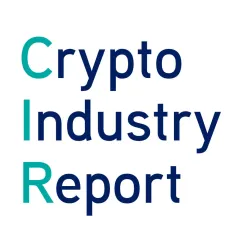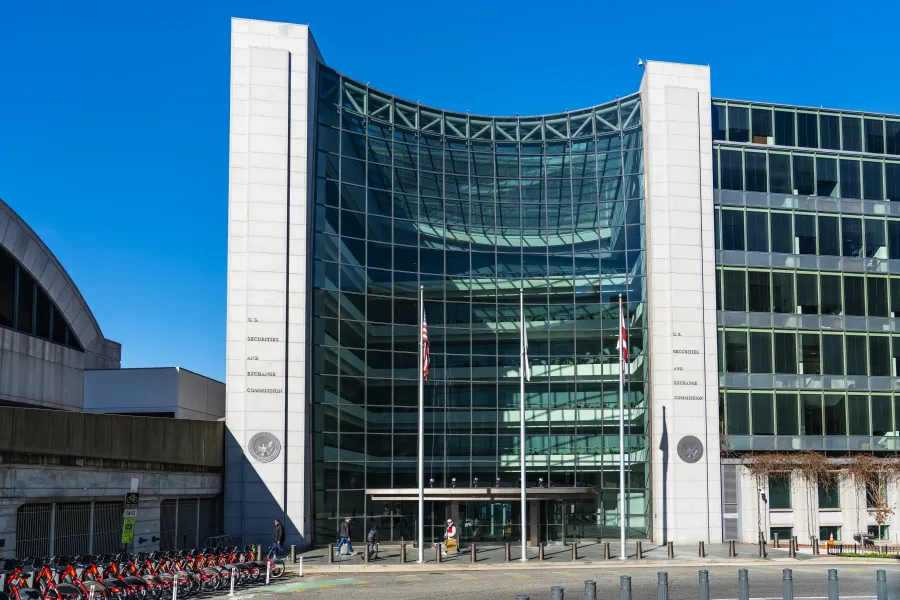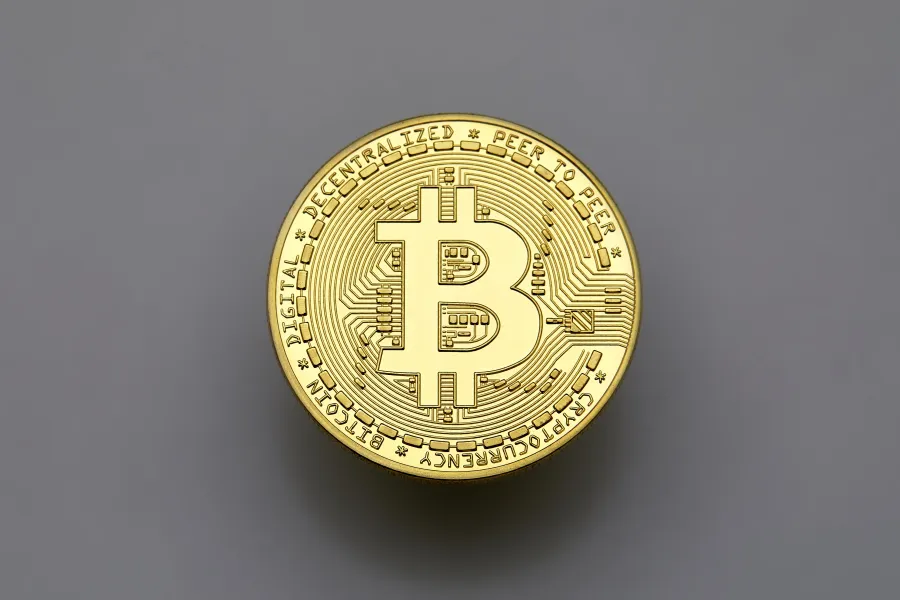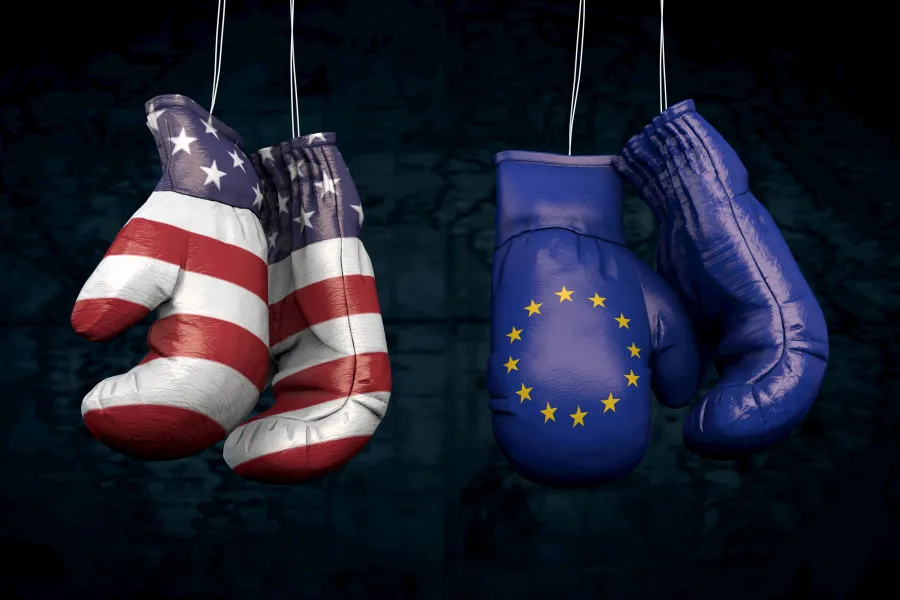EU is on the verge of adopting controversial cryptocurrency legislation
This week, our blockchain experts assessed the following topics:
- EU is on the verge of adopting controversial cryptocurrency legislation
- Metaverse: A $13 Trillion opportunity?
- Algorithmic Stablecoins: Is Bitcoin a must-have anchor reserve asset?
-
Bridge Hacks: The case for decentralized bridges
Our bi-weekly Crypto Industry Report provides you with valuable information on the global crypto industry – picked and analysed by our blockchain experts.
EU is on the verge of adopting controversial cryptocurrency legislation
It was taken as a huge relief within the crypto space: The much-discussed proposal to ban Proof-of-Work (PoW) based cryptocurrencies was recently rejected in the EU Parliament. Soon after though, the next wave of trouble came rolling in. On the 31st of March, the EU’s Committee on Economic and Monetary Affairs (ECON) and the Committee on Civil Liberties (LIBE) voted in favour of a draft proposing stricter legislation regarding money laundering and terrorist financing.
As it stands, this new piece of legislation would require digital asset service providers to not only collect sensitive personal information of their customers as is already the case today, but they would also need to verify this data and send it to authorities if a transaction exceeds the limit of €1,000. The rules would also apply to so-called unhosted wallets, which are typically referred to as non-custodial. Essentially, this regulation is about the implementation of the so-called "Travel Rule" and as such part of the new EU anti-money laundering package.
While EU politicians argue that the legislation aims to ensure digital assets are on par with traditional money transfers, several people within the crypto space are quick to point out the impracticability of this move. After all, verifying the information of every individual behind a non-custodial wallet seems like a mere impossibility.
Many fear that this legislation would severely stifle innovation in Europe as its crypto-asset service providers could only serve customers wanting to transfer cryptocurrency to their unhosted wallets by operating at an unknown extra cost. Others also argue that there doesn’t seem to be much empirical evidence for this legislation. They point to blockchain forensic firm Chainalysis, which recently showed that the illicit activity’s share of cryptocurrency transaction volume has never been lower.
For now, these rules have not been officially enacted. They still need to pass negotiations between the EU Parliament, the European Council as well as the European Commission. Only if unopposed by them, will the draft become reality, which would give the crypto industry nine to 18 months to fully comply with it.
Metaverse: A $13 Trillion opportunity?
Investors love financial forecasts, which is why analysts are called upon to produce them. Just recently, in an extensive report published by Citibank, such analysts made a bold prediction. According to them, the up-and-coming metaverse could turn into an $8 to $13 trillion market with 5 billion users by 2030.
What seems like an outlandish prediction was corrected downward by other analysts. They forecast that the global metaverse market size will be more like $678.8 billion in 2030. So, what to make of these widely different forecasts? In the end, whichever number is more plausible depends on how widely the term metaverse is stretched. If one includes - as Citibank analysts do - things like smart manufacturing, health care, education, social commerce, virtual cities, and more as being a big part of the future metaverse, a predicted valuation in the trillions is not entirely far-fetched.
Be that as it may, the concept of the metaverse did get a boost in 2021. Originally introduced in the 1992 novel “Snow Crash”, the metaverse has become ever more popular – not least because of Facebook’s rebranding to Meta, signalizing a change of direction towards building out the metaverse.
From the crypto side of things, the world has witnessed the emergence of blockchain-based metaverses. Together, the four major metaverse platforms – The Sandbox, Decentraland, Cryptovoxels, and Somnium – generated virtual real estate sales worth $501 million. Virtual land buying is projected to grow significantly, which goes to show that blockchain-based platforms will play an important part in the metaverse.
As a matter of fact, they are considered essential. If the metaverse will indeed be more pervasive and powerful than anything else, representing the single gateway to all things online, we don’t want one central party to have exclusive control over it. Because of their inherent features like openness or permissionlessness, blockchain-based platforms represent a viable way to ensure that the metaverse is being built in a public and decentralized manner.
Algorithmic Stablecoins: Is Bitcoin a must-have anchor reserve asset?
The meteoric rise of Terra’s stablecoin UST has caught the crypto industry’s interest. Its market capitalization has shot up to almost $17 billion as of the beginning of April 2022 having outpaced stablecoin competitors like USDC or USDT by far in the second half of 2021.
Further attention was recently drawn to the stablecoin and its mechanics when it was announced that the Luna Foundation, the driver behind Terra’s ecosystem, would buy up to $10 billion of Bitcoin reserves for Terra’s USD pegged stablecoin. And over the course of the last few weeks, the foundation did indeed buy Bitcoin; as of April 5th, the entity self-reports to hold 30,727.98 Bitcoin.
The Bitcoin war chest is accumulated to provide support to UST in times of market stress. Since Terra’s stablecoin is an algorithmic stablecoin, its peg is protected through market arbitrage mechanisms and is not backed by traditional securities as is the case with fiat-backed stablecoins. A crucial role is played by Luna, Terra’s ecosystem coin. If UST drops in price below one dollar, UST is algorithmically burned, while new Luna coins are created until the peg is again at one dollar. Alternatively, if UST’s price goes beyond one dollar, Luna coins are burnt, and new UST tokens are created to drive down the price. This interplay of supply and demand orchestrated by arbitrageurs is supposed to grant UST’s one-dollar price.
Should Luna’s price drop significantly to an extent where it can no longer defend UST’s dollar peg, the Bitcoin reserves held by the Luna Foundation should serve as an additional defence line for the stabilization of the stablecoin. As such, some consider the Bitcoin accumulation by the Luna Foundation as a necessary step in the evolvement of algorithmic stablecoins. Too many such algo stablecoins have already gone by the wayside, the most recent one being Neutrino USD (USDN), which is on the brink of failure.
Ultimately, algorithmic stablecoins represent the art of central banking on blockchain technology. Just like central banks need to manage their currency with reserves, decentralized algorithmic stablecoin protocols need to do the same. And speaking of central banking, in times like ours, where foreign currency reserves have shown to be easily censorable, central banks could be advised to also hold Bitcoin as a neutral monetary asset. One such proposal has just been brought to the Swiss National Bank’s attention.
Bridge Hacks: The case for decentralized bridges
Yet another bridge was recently hacked for $600 million. The most recent hack happened on Ronin bridge, which is an Ethereum sidechain and enables fast and cheap transactions for the blockchain game called Axie Infinity.
The reason for the hack can be found in Ronin’s centralized structure. Its bridge was secured by nine validators only, which makes it possible to move funds off the Ronin bridge if five out of the nine validators agree with their signatures and approve a transaction. And this is exactly what happened: Hackers gained control over five validators, which allowed them to unlock funds on the Ronin sidechain and have them sent to an Ethereum address of their choice.
Although the team behind Ronin has replaced the validator nodes that were compromised and plans to add new validators soon as a way to strengthen the bridge’s security, centralized bridges don’t seem to measure up to the task of enabling a secure cross-chain blockchain multiverse. Because of this fate, some call the recent cross-chain endeavours a technological dead-end.
Others don’t agree with this verdict. As a matter of fact, newer bridges like Connext, Nomad, or Layer Zero are pursuing an interoperable cross-chain future and work on realizing this as hard as ever. And while these solutions seem to be trust-minimized, genuine trustless interoperability architecture is coming next. One interesting solution that has been in active development for a long time is the Blockchain Transmission Protocol (BTP). While live on testnet and currently being optimized for gas cost, the solution is primed to launch later this month.
Share post

Related Posts

To be continued: SEC pushes back at Coinbase
SEC pushes back against Coinbase's claim of no regulatory jurisdiction, stating the crypto exchange knowingly violated securities laws. Meanwhile, Gemini, owned by the Winklevoss twins, files a lawsuit against Digital Currency Group and CEO Barry Silbert alleging fraud and deception following the collapse of a lending venture. The Bank for International Settlements survey reveals that 93% of central banks are working on Central Bank Digital Currencies (CBDCs) which are seen as potential geopolitical policy tools and a challenge to the dollar's dominance. The race for a Bitcoin ETF intensifies, with BlackRock refiling its application featuring Coinbase as the market surveillance partner, as the Grayscale Bitcoin Trust's discount to net asset value narrows, potentially indicating the transformation into a proper ETF.

BlackRock fever: The ETF filing spree and institutional appetite
BlackRock filed for a Bitcoin ETF with the SEC, inspiring similar applications from firms like WisdomTree, Invesco, and Fidelity, and boosting Bitcoin's value. Traditional finance institutions such as Fidelity and Nasdaq are showing increased interest in crypto, with moves towards exchange and custody services. The defunct crypto exchange FTX, under new CEO John Ray III, is planning a potential revival after recovering significant assets. Meanwhile, the IMF is developing a global CBDC platform for cross-border transactions and DAI, a major stablecoin, is diversifying its backing from USDC to include real-world assets.

SWIFT explores blockchain interoperability
SWIFT has partnered with Chainlink to experiment with leveraging its infrastructure for transferring tokenized value across blockchain networks. The trials will address interoperability, regulatory challenges, and operational drawbacks for financial institutions in a blockchain environment. Chainlink will provide connectivity between private and public blockchains. SWIFT's findings will be published later this year.

China wants an Internet 3.0, while Hong Kong gears up for crypto trading launch
China is striving for advancement in Internet 3.0 technologies, with Beijing's white paper outlining plans to invest in the development of the metaverse and Web3 tech such as non-fungible tokens, but not cryptocurrencies due to the country's previous ban. Meanwhile, Hong Kong is launching its new crypto trading regulations, allowing retail investors to participate from June 1, 2023, with exchanges like Huobi Hong Kong beginning to offer spot trading to retail and institutional clients. Furthermore, the Cybersecurity and Technology Crime Bureau of the Hong Kong Police Force is launching a metaverse platform, 'CyberDefender', to educate the public about potential threats and crime prevention in the metaverse.

BRC-20: Innovating on Bitcoin is the new cool
A new Bitcoin “token standard” called BRC-20 is the hottest thing right now in the crypto space. It was introduced in March 2023 by a pseudonymous person called Domo. Bitcoin Request for Comment 20 (BRC-20) is an experiment that brings fungible tokens to the Bitcoin blockchain using the Ordinals protocol. Ordinals rely on ordinal theory, enabling the identification and tracking of individual satoshis within Bitcoin's existing supply, while also allowing them to be inscribed (associated) with data. Through this technique, satoshis (sats) are given ordinal numbers starting with zero. Anyone can add a script file to a sat to create and transfer a BRC-20 token on the Bitcoin blockchain. BRC-20 tokens are created using three functions: deploy, mint, and transfer.

US versus EU: Giants fighting for regulatory clarity
It is official now: The European Parliament voted overwhelmingly in favour of Markets in Crypto Assets (MiCA), legislation that will guide the crypto sector in all 27 European Union member states. 517 parliament members voted for it, while 38 voted against it. This approval makes Europe the first continent with comprehensive rules for cryptocurrencies. Also, it means that all EU member states will have unified crypto regulations. So, if a crypto business is approved in one EU member country, it could easily expand operations to another member state. The EU’s milestone was lauded by Binance as well as Kraken and Coinbase.

Ethereum: Another milestone reached with the Shanghai Update
On April 12, 2023, Ethereum successfully executed the planned Shanghai update also known as Shapella. The upgrade allows validators to unstake their staked ETH and withdraw their rewards, as well as staked ether if chosen. Now that another level of uncertainty has waned for the biggest smart contract blockchain, this new feature could attract more investors to stake their ether.

CFTC versus Binance:
Clash of the titans
The world’s leading crypto exchange by volume, Binance, alongside its CEO, Changpeng Zhao, and ex-Chief Compliance Officer, Samuel Lim, are being sued by the US Commodity Futures Trading Commission (CFTC).

Stablecoin USDC briefly lost its
peg. What do we learn from this?
One of the top stablecoins by market cap, USD Coin (USDC), de-pegged briefly from the US dollar on March 11 following the collapse of Silicon Valley Bank (SVB). Circle, the stablecoin’s issuer, held $3.3 billion in USDC reserves with the bank, which caused panic as investors rushed to withdraw their funds, assuming USDC could implode because of insufficient backing. However, the amount represented less than 8% of the stablecoin’s reserves.

Ethereum Shanghai upgrade pushed to April: Will there be too much selling pressure?
Ethereum stakers have been eagerly awaiting the Shanghai upgrade, which will enable them to withdraw their staked ether. Stakers’ funds have been locked since Ethereum introduced the proof-of-stake Beacon Chain in December 2020. The upgrade was originally slated to take place sometime in March but was pushed by about two weeks to April during a recent execution layer meeting.